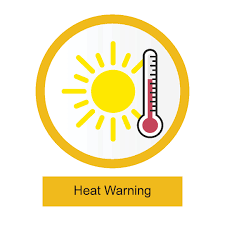Understanding Heat Warnings in Canada: 2023 Overview

Introduction
As Canada faces an increasingly warm climate, heat warnings have become a vital public safety measure. These alerts inform citizens about potentially dangerous temperature conditions, urging them to take necessary precautions. With heatwaves becoming more common due to climate change, understanding heat warnings is essential for safeguarding health and well-being.
The Importance of Heat Warnings
During heatwaves, temperatures can soar above normal levels, potentially leading to serious health risks including heat exhaustion and heat stroke. Vulnerable populations, such as the elderly, children, and those with pre-existing health conditions, are particularly at risk. The Government of Canada, along with provincial health services, issues heat warnings to provide advance notice of extreme temperatures, fostering community awareness and preventive actions.
Current Heat Warning Events
As of this week, several regions across Canada are under heat warnings due to a significant rise in temperatures. The Weather Network reported that cities including Toronto, Montreal, and Calgary are experiencing daytime highs exceeding 30°C (86°F), with overnight lows remaining above 20°C (68°F). The system is exacerbated by humidity, causing the humidex to climb higher, which can feel more like 40°C (104°F) in some areas.
The Canadian Environmental and Climate Change Agency (ECCC) has also reported that a high-pressure system has been responsible for the extended heat conditions, leading to these warnings. Citizens are advised to stay hydrated, limit outdoor activities during peak hours, and seek air-conditioned spaces if available.
Response Measures and Precautions
To mitigate the impacts of these heat warnings, several measures have been recommended by health officials. The key recommendations include:
- Staying indoors during the hottest parts of the day (usually between 11 a.m. and 4 p.m.)
- Drinking plenty of fluids, ideally water, to prevent dehydration
- Checking on vulnerable family members and neighbors, especially the elderly
- Adjusting plans to avoid excessive physical exertion in high heat conditions
Conclusion
Heat warnings serve as a crucial alert for Canadians, especially during summer months when heatwaves are prevalent. By understanding the implications of these warnings and following health recommendations, individuals can protect themselves and their loved ones from the adverse effects of extreme heat. As climate change continues to influence weather patterns, it is likely that heat warning alerts will become a more regular part of life in Canada, emphasizing the importance of preparedness in the face of rising temperatures.









